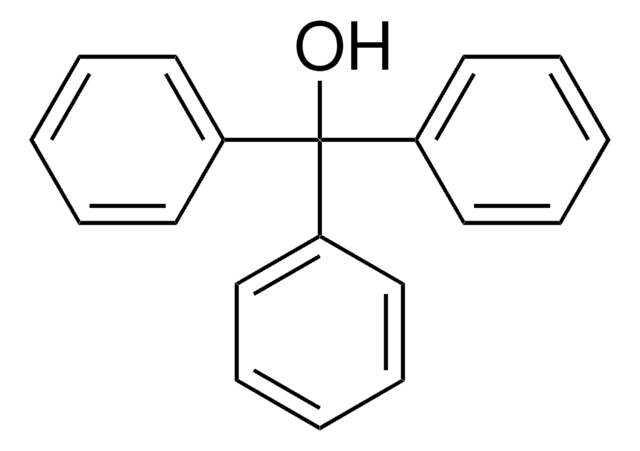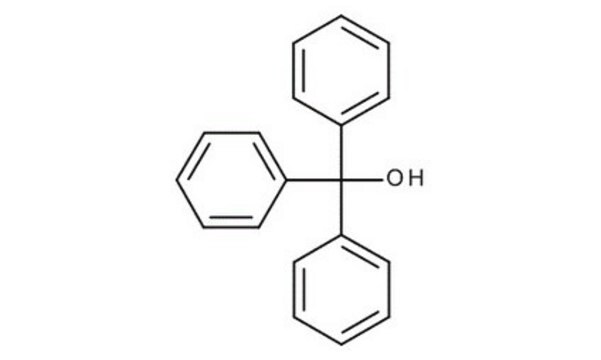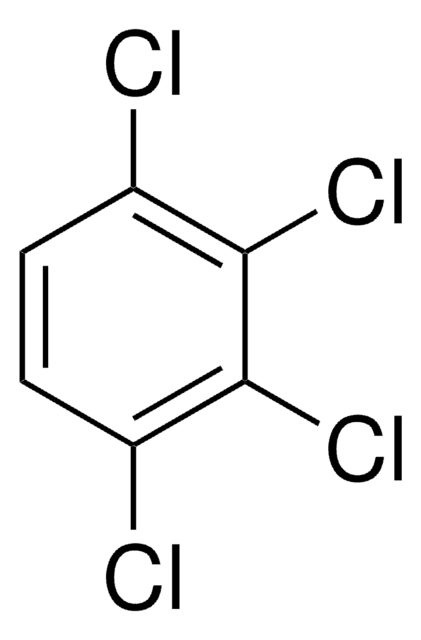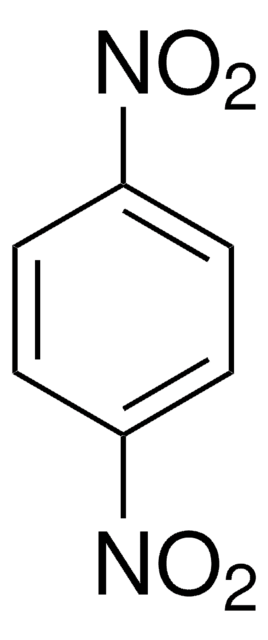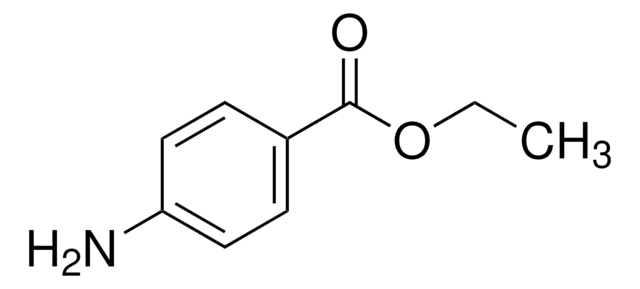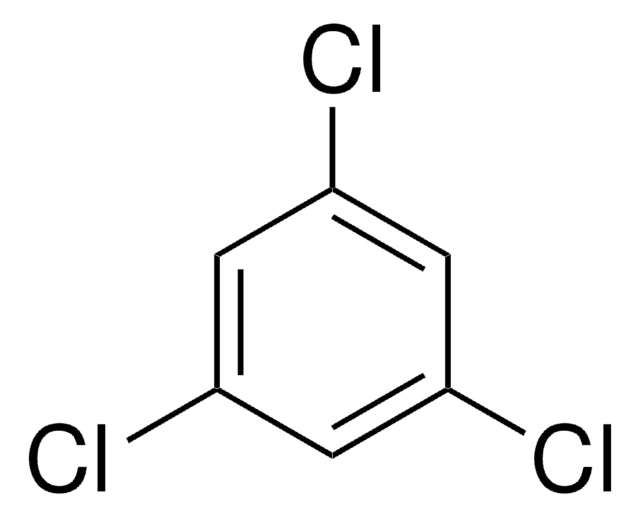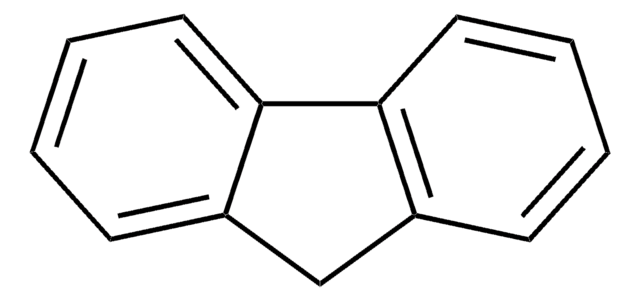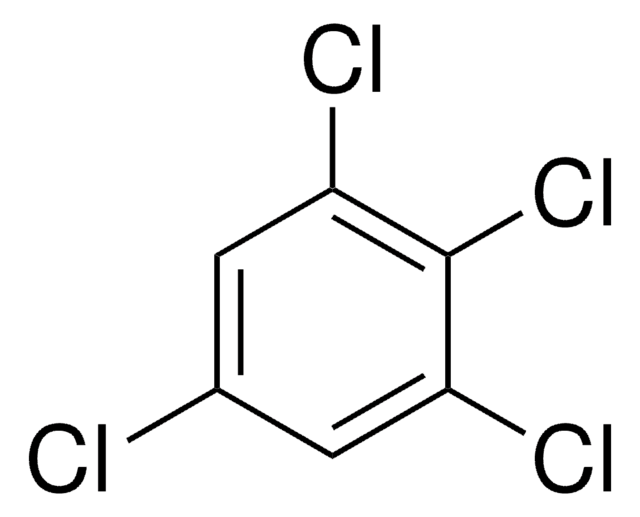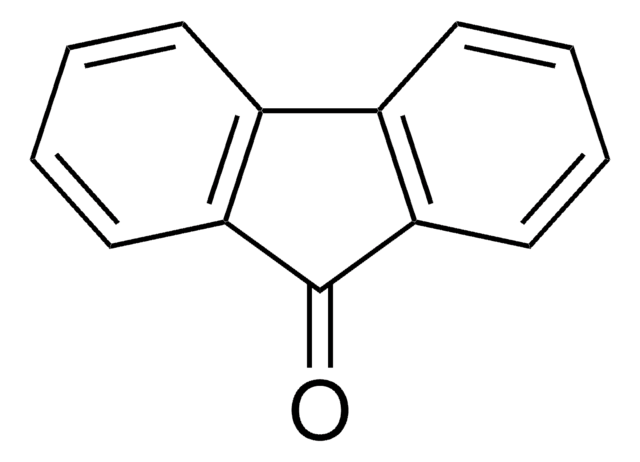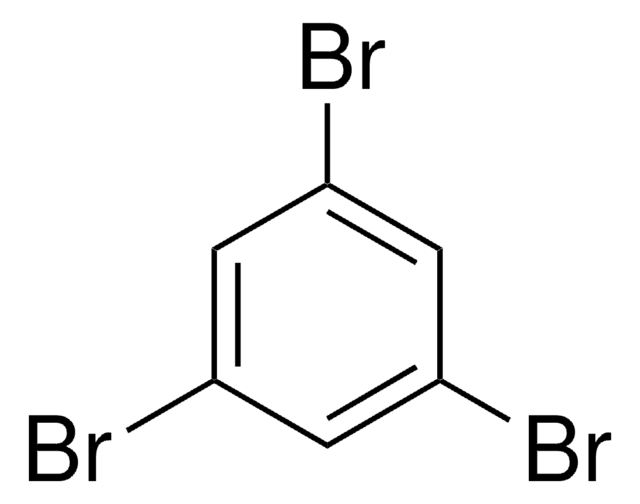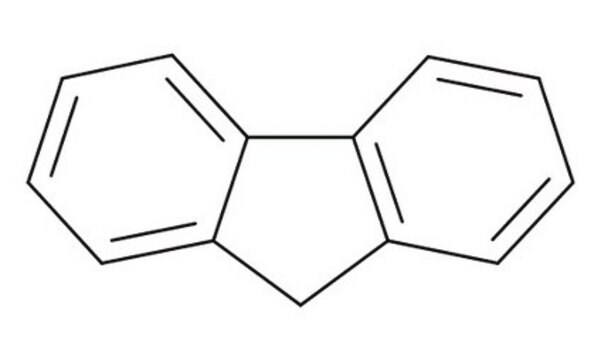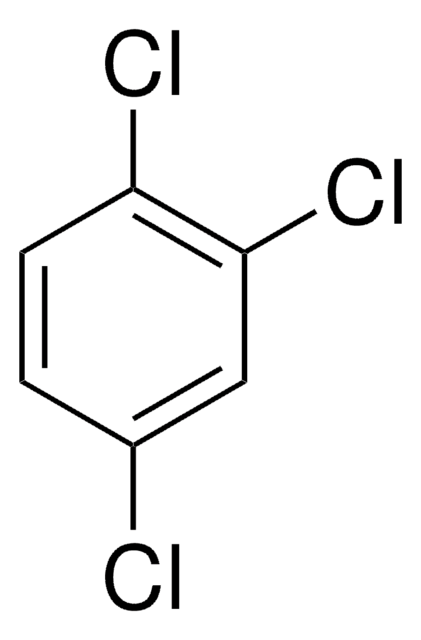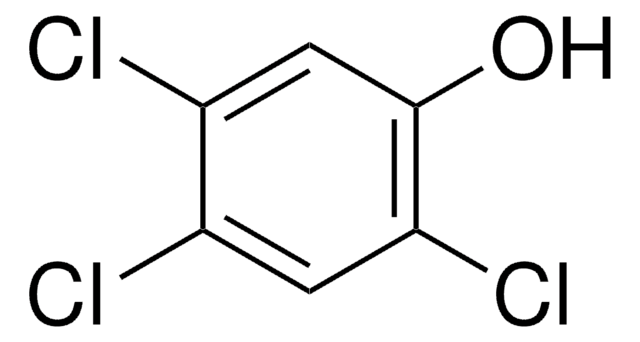131857
1,2,4,5-Tetrachlorobenzene
98%
Iniciar sesiónpara Ver la Fijación de precios por contrato y de la organización
About This Item
Fórmula empírica (notación de Hill):
C6H2Cl4
Número de CAS:
Peso molecular:
215.89
Beilstein:
1618315
Número CE:
Número MDL:
Código UNSPSC:
12352100
ID de la sustancia en PubChem:
NACRES:
NA.22
Productos recomendados
Nivel de calidad
Análisis
98%
formulario
chips
bp
240-246 °C (lit.)
mp
138-140 °C (lit.)
cadena SMILES
Clc1cc(Cl)c(Cl)cc1Cl
InChI
1S/C6H2Cl4/c7-3-1-4(8)6(10)2-5(3)9/h1-2H
Clave InChI
JHBKHLUZVFWLAG-UHFFFAOYSA-N
¿Está buscando productos similares? Visita Guía de comparación de productos
Categorías relacionadas
Aplicación
1,2,4,5-Tetrachlorobenzene was used to study the environmental behavior of hexachlorobutadiene (HCBD).
Palabra de señalización
Warning
Frases de peligro
Consejos de prudencia
Clasificaciones de peligro
Acute Tox. 4 Oral - Aquatic Acute 1 - Aquatic Chronic 1
Código de clase de almacenamiento
11 - Combustible Solids
Clase de riesgo para el agua (WGK)
WGK 3
Punto de inflamabilidad (°F)
320.0 °F - closed cup
Punto de inflamabilidad (°C)
160 °C - closed cup
Equipo de protección personal
dust mask type N95 (US), Eyeshields, Gloves
Elija entre una de las versiones más recientes:
¿Ya tiene este producto?
Encuentre la documentación para los productos que ha comprado recientemente en la Biblioteca de documentos.
Los clientes también vieron
Haiyan Zhang et al.
Environmental science & technology, 48(3), 1525-1531 (2014-01-10)
Although hexachlorobutadiene (HCBD) was recently proposed as a candidate persistent organic pollutant (POP) under the Stockholm Convention, information about its environmental levels and distributions is still very limited. In this work, HCBD was determined in the sewage sludge from 37
Lin Xiao et al.
Environmental science & technology, 41(8), 2750-2755 (2007-05-31)
We observed that the presence of transition metal ion, Ag+, Cu2+, or Fe3+, at a concentration of 3 mg L(-1) increases sorption of two nonpolar hydrophobic organic compounds (HOCs), phenanthrene (PHEN), and 1,2,4,5-tetrachlorobenzene (TeCB) by 1.5-4 times to Gram-negative bacteria
Motoki Terashima et al.
Chemosphere, 57(6), 439-445 (2004-09-08)
Solubilizing abilities of aggregates of humic acid (HA) to chlorinated benzenes (CBs) were investigated by means of the apparent water solubility enhancement. Both the water solubilities of 1,4-dichlorobenzene (DCB) and 1,2,4,5-tetrachlorobenzene (TeCB) linearly increased with increasing concentration of HA above
S Beil et al.
Journal of bacteriology, 180(21), 5520-5528 (1998-10-29)
The TecA chlorobenzene dioxygenase and the TodCBA toluene dioxygenase exhibit substantial sequence similarity yet have different substrate specificities. Escherichia coli cells producing recombinant TecA enzyme dioxygenate and simultaneously eliminate a halogen substituent from 1,2,4,5-tetrachlorobenzene but show no activity toward benzene
Oxygen consumption of juvenile rainbow trout (Oncorhynchus mykiss) exposed to sublethal concentrations of 1,2,4,5-tetrachlorobenzene and tetrachloroguaiacol.
R Yang et al.
Bulletin of environmental contamination and toxicology, 59(3), 479-485 (1997-09-01)
Nuestro equipo de científicos tiene experiencia en todas las áreas de investigación: Ciencias de la vida, Ciencia de los materiales, Síntesis química, Cromatografía, Analítica y muchas otras.
Póngase en contacto con el Servicio técnico